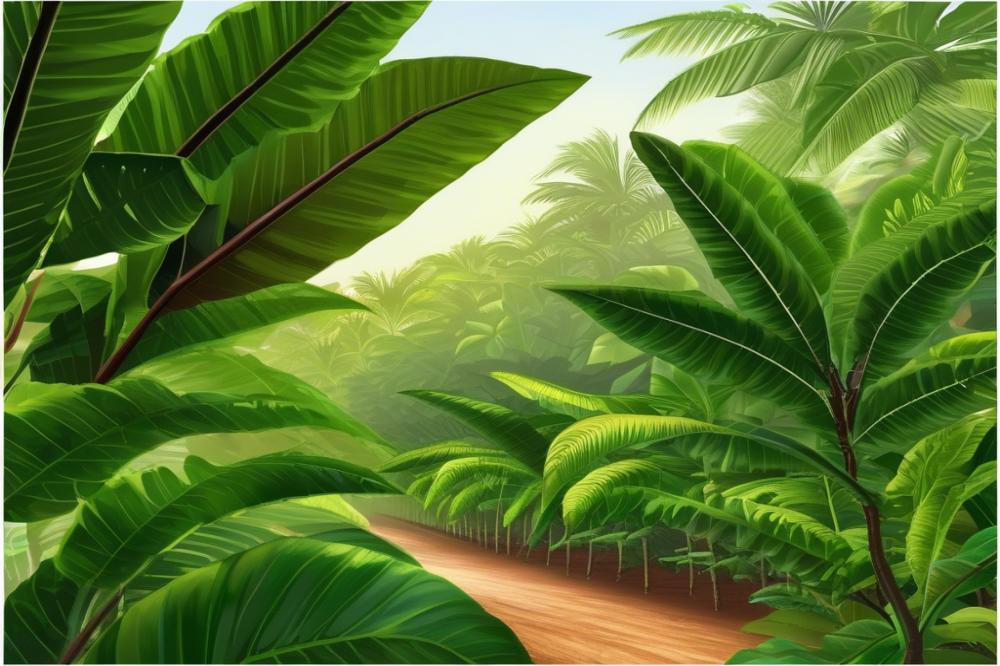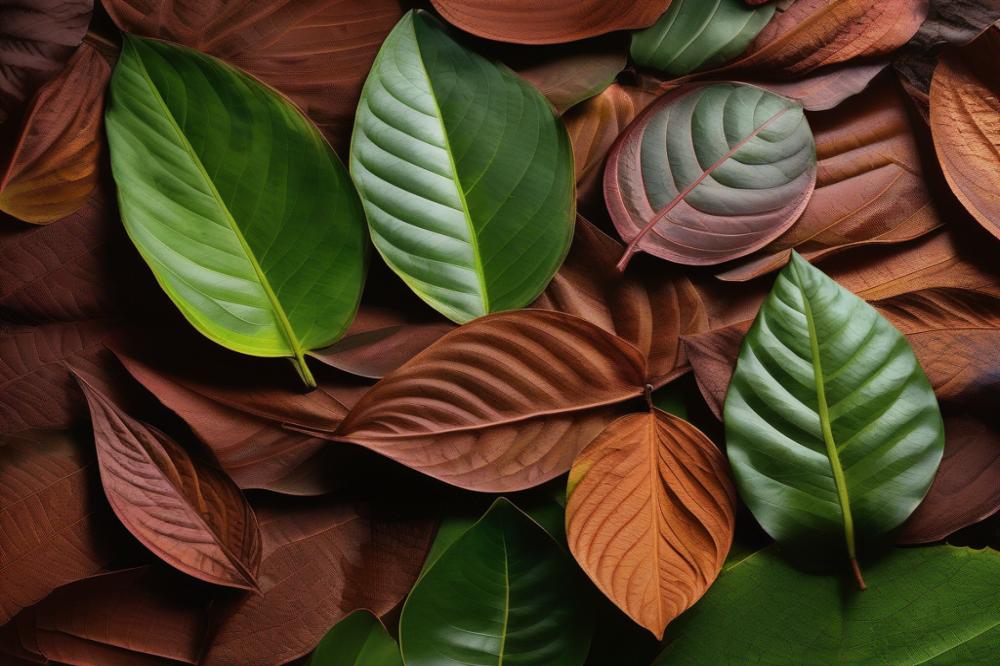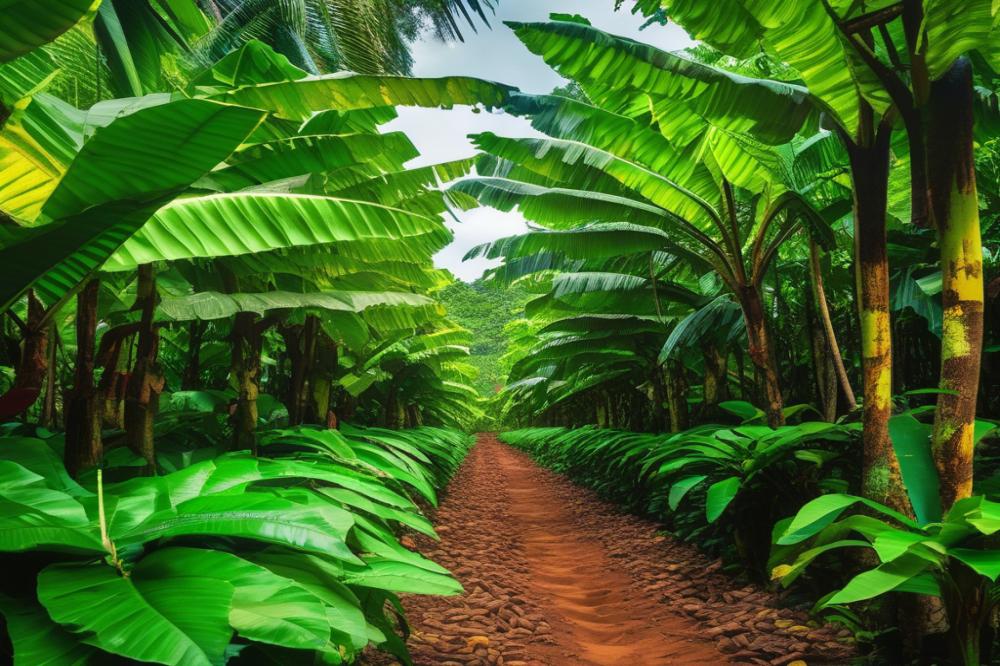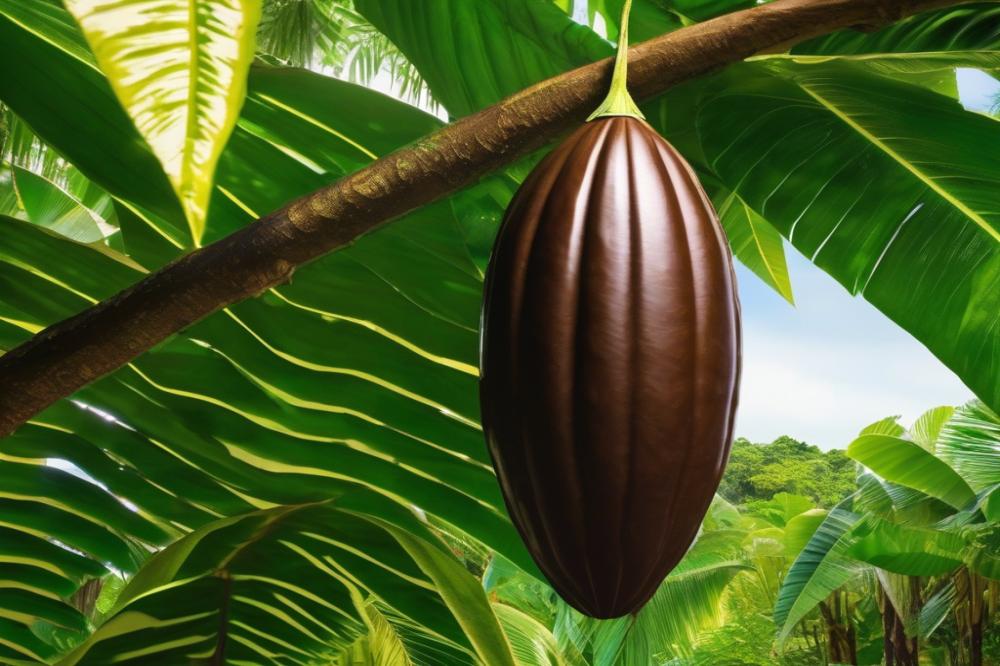Introduction
The Cocoa plant, known scientifically as Theobroma cacao, holds a crucial position in agriculture, particularly in tropical regions. With its rich cultural and economic significance, cocoa is primarily cultivated for its beans, which are transformed into chocolate and products enjoyed worldwide. The cultivation of cocoa beans provides livelihoods for millions of farmers, contributing to economies in countries like Ivory Coast, Ghana, and Indonesia.
cocoa leaves play an essential role in the overall health of the plant. These leaves are not merely green appendages; they are vital for several processes. For instance, the anatomy of these leaves enables efficient nutrient uptake and photosynthesis. This means that healthy cocoa leaves contribute directly to robust plant growth and productivity. Moreover, attributes such as pest resistance and disease resistance are influenced significantly by the condition of the leaves.
This article will delve into various aspects of cocoa leaves. We will explore their role in nutrient uptake, the impact of environmental factors on leaf health, and how maintain healthy leaves can enhance soil health. Each of these elements ties back to the central theme of plant health, highlighting the interconnectedness of leaf characteristics and the overall vitality of the Cocoa plant.
Cocoa leaf characteristics

Cocoa leaves are an important aspect of the overall health of the cocoa plant. They are typically dark green and have a glossy appearance. A single cocoa tree can produce numerous leaves at a time, all contributing to its vitality. When examining the morphology of these leaves, it is evident that their shape is elliptical with serrated edges. This design helps in maximizing the area for light capture, which is crucial for photosynthesis.
Digging deeper, leaf anatomy plays a significant role in nutrient uptake. Cocoa leaves have a complex internal structure composed of layers that facilitate the absorption of essential elements. The palisade mesophyll cells are packed with chloroplasts, allowing efficient light absorption. Additionally, the vascular system within the leaves transports vital nutrients from the soil. Well-developed leaves are able to tap into the soil health, ensuring the plant receives all the necessary minerals.
Size, shape, and arrangement of the leaves can greatly impact plant growth. Larger leaves can capture more sunlight, enhancing the photosynthesis process. However, leaf size isn’t the only factor; the arrangement on the stem, known as phyllotaxy, determines how light reaches each leaf. This spatial organization minimizes shadowing, promoting better light exposure. Moreover, a well-developed canopy can aid in pest resistance and avoid the spread of diseases.
Environmental factors also influence the characteristics of cocoa leaves. For instance, in tropical regions where cocoa is mainly cultivated, humidity and temperature play a role in leaf development. Healthy leaves enhance the tree’s ability to withstand stress from pests and diseases. When the plant is strong, it can develop a more resilient set of leaves that protect against potential threats. Thus, cultivating a healthy environment is key to maximizing cocoa leaf performance.
Photosynthesis and Nutrient Uptake

Cocoa leaves play a crucial role in photosynthesis, the process that allows plants to convert sunlight into energy. Through this process, these leaves capture light and use it to transform carbon dioxide from the air and water from the soil into glucose, a simple sugar. The energy stored in glucose fuels various plant functions, fostering growth.
The anatomy of cocoa leaves contributes significantly to nutrient uptake from the soil. Their surface features, such as the arrangement and density of chloroplasts, affect how much light is absorbed. Leaves rich in chlorophyll are especially effective at harnessing energy. The more efficiently a leaf can photosynthesize, the more energy is available for the plant to absorb essential nutrients.
Leaf characteristics can also impact how well a cocoa tree interacts with its environment. Healthier leaves often boast better pest and disease resistance, creating a more robust plant. Good health of both leaves and soil is interlinked. When soil health is optimized, it provides an adequate supply of nutrients that cocoa trees rely on for optimal function and growth.
Furthermore, environmental factors such as humidity and temperature can influence leaf health, which in turn affects nutrient absorption. For instance, high temperatures may cause excessive water loss through transpiration. This process not only impacts the leaf but might also reduce the plant’s ability to uptake nutrients because the roots may dry out faster.
Proper leaf structure aids in maintaining adequate moisture levels, therefore promoting better nutrient uptake. So, leaf health directly corresponds to effective nutrient absorption and, ultimately, successful plant growth. In the realm of tropical agriculture, understanding these relationships is vital. Farmers can implement strategies that improve both leaf quality and soil vitality, enhancing productivity in cocoa farming.
Pest and Disease Resistance

Analysis of various attributes in cocoa leaves reveals their significant role in resisting pests. Robust leaf structures can deter insects, making it harder for them to feed on plants. This pest resistance is vital for healthy growth, especially in the delicate ecosystems of tropical agriculture.
Leaf Structure and Disease Resistance
The anatomy of a cocoa leaf plays a crucial part in its ability to fend off diseases. Thick, waxy layers on the surface can prevent harmful pathogens from penetrating. In addition, the composition of the leaf contains certain chemical compounds that inhibit mold and other diseases. These natural defenses are essential for maintaining leaf health, crucial for effective photosynthesis and nutrient uptake.
Common Pests and Diseases
Cocoa plants face various threats from pests and diseases that affect their health. Insects such as the cocoa pod borer and mealybugs can severely damage cocoa leaves, leading to reduced yield and plant growth. Fungal diseases, particularly the black pod disease, can devastate crops if not managed properly. Each of these challenges underscores the need for plants to possess strong pest and disease resistance.
The Impact of Environmental Factors
Environmental factors play a significant role in both pest and disease prevalence. Soil health influences how well cocoa plants develop their defenses. When soil is rich in nutrients, plants are better equipped to handle stress from pests and diseases. Moreover, variations in weather patterns can either exacerbate or mitigate these challenges, affecting overall leaf health.
In summary, understanding pest resistance and disease resistance in cocoa leaves is foundational for the success of cocoa crops. Healthy leaves contribute to photosynthesis, which in turn supports the entire plant’s growth and resilience. Monitoring these characteristics is key to sustainable cocoa farming practices and the wellbeing of cocoa plants.
Environmental Factors Affecting Cocoa Leaves
Influence of Climate and Environmental Conditions on Cocoa Leaf Development
Cocoa leaves thrive best in warm, humid climates. These conditions are crucial for optimal plant growth. Sunlight plays a significant role in the process of photosynthesis. A balanced amount of rainfall contributes to the health of the plants as well. Dry conditions can hinder leaf development and stunt growth. Leaves may also become smaller and less vibrant. Nutrient uptake is often compromised in areas with poor soil health. Temperature fluctuations might stress the plants, leading to weaker leaf structures. Healthy cocoa leaves are vital for producing quality beans.
How Environmental Stress Affects Leaf Characteristics and plant health
Environmental stress can significantly impact cocoa leaves. High temperatures can lead to increased transpiration, causing leaves to lose water rapidly. As a result, this may reduce their effectiveness in photosynthesis. Stress can also weaken pest resistance and disease resistance. Leaves under duress may become discolored or show signs of damage. Leaf anatomy can change, leading to a reduction in overall plant vigor. Plants need to adapt, but constant stress can hinder their ability to thrive.
Strategies for Managing Environmental Impacts on Cocoa Plants
Farmers can take several steps to manage environmental impacts. Using organic fertilizers can improve soil health, which supports better nutrient uptake. Crop rotation helps maintain soil fertility and reduces disease pressure. Providing shade trees can protect cocoa plants from extreme sunlight and heat. Irrigation systems can support growth during dry spells. Implementing pest management strategies allows for healthier leaf development. Regular monitoring of environmental conditions helps in anticipating problems. Engaging in sustainable practices will promote resilience in tropical agriculture.
Cocoa Leaf Management in Tropical Agriculture
Best Practices for Maintaining Healthy Cocoa Leaves
Cocoa trees thrive in tropical climates with the right care. Maintaining healthy cocoa leaves is essential for overall plant health. Regularly inspecting leaves helps identify issues early. Look for signs of pest infestations or disease. Implementing a strong pest resistance strategy is vital. This could involve introducing beneficial insects that target pests. Keeping the area around the trees clean will reduce hiding spots for harmful insects.
Another crucial aspect is nutrient uptake. Providing adequate fertilizers ensures that cocoa trees have the necessary nutrients they need. Organic options, such as compost, can enhance soil health. Soil rich in organic matter leads to better plant growth and improved leaf quality. Proper irrigation techniques also support leaf health. Avoid waterlogged soil, as it can lead to root rot and impact leaf vitality.
Importance of Cocoa Leaf Management for Sustainable Tropical Agriculture
Managing cocoa leaves contributes to the sustainability of tropical agriculture. Healthy leaves help cocoa trees perform photosynthesis effectively, converting sunlight into energy. This process is key for producing cocoa pods. It’s also crucial for maintaining biodiversity in farming systems. When cocoa trees thrive, they positively impact the entire ecosystem.
Environmental factors can greatly influence leaf health. Factors such as humidity and temperature play significant roles. Properly managing these aspects can prevent diseases and stimulate growth. Farmers who embrace sustainable practices yield healthier leaves and contribute to the environment. Additionally, tree diversity can enhance disease resistance, making cocoa farming more resilient.
Role of Leaf Health in Maximizing Cocoa Yield and Quality
Leaf health directly affects cocoa yield and quality. When leaves are robust, they support greater pod formation. This translates to higher production levels. Nutrient-rich leaves provide better crops, which enhances the quality of cocoa beans. Quality beans fetch higher prices in the market, benefiting farmers.
Pest and disease resistance are tied closely to the vitality of the leaf anatomy. Cocoa trees with healthy leaves are better equipped to fend off threats. Investing time and resources into leaf management yields substantial returns. Farmers should also communicate with local agricultural experts. This connection can provide insights on improving practices related to cocoa leaf care.
Overall, healthy cocoa leaves form the foundation for successful tropical agriculture. They ensure that trees have the necessary resources for growth. By prioritizing leaf management, farmers can achieve sustainability and better crop yields.
Understanding the Role of Cocoa Leaves in Plant Health
In summary, the characteristics of cocoa leaves play a vital role in the health of the plant. Through their unique structure and composition, cocoa leaves support overall growth and vigor. Healthy leaves are essential for photosynthesis, which directly affects the plant’s ability to produce energy. This process not only supports growth but also enhances nutrient uptake, leading to better yields.
The interrelationship between cocoa leaves and plant growth is crucial for sustainable agriculture. Strong and healthy leaves can resist pests and diseases, reducing the need for chemical interventions. This approach promotes an environmentally friendly model of farming. Farmers who prioritize the health of their cocoa plants benefit from improved resilience and productivity over time.
Final thoughts encourage continued research on best practices in cocoa cultivation. Understanding leaf characteristics more deeply can lead to innovative techniques that enhance plant health. Field studies could provide insights into how different conditions affect leaf growth and overall crop performance. Improvements in cultivation methods will not only benefit farmers but also contribute positively to the ecosystems they work within.
Therefore, a call to action is clear. Researchers, agronomists, and farmers should work together to explore new practices. Sharing knowledge and experiences can foster a community focused on sustainable cocoa farming. Emphasizing the significance of cocoa leaves will pave the way for healthier plants and more resilient agricultural systems.



